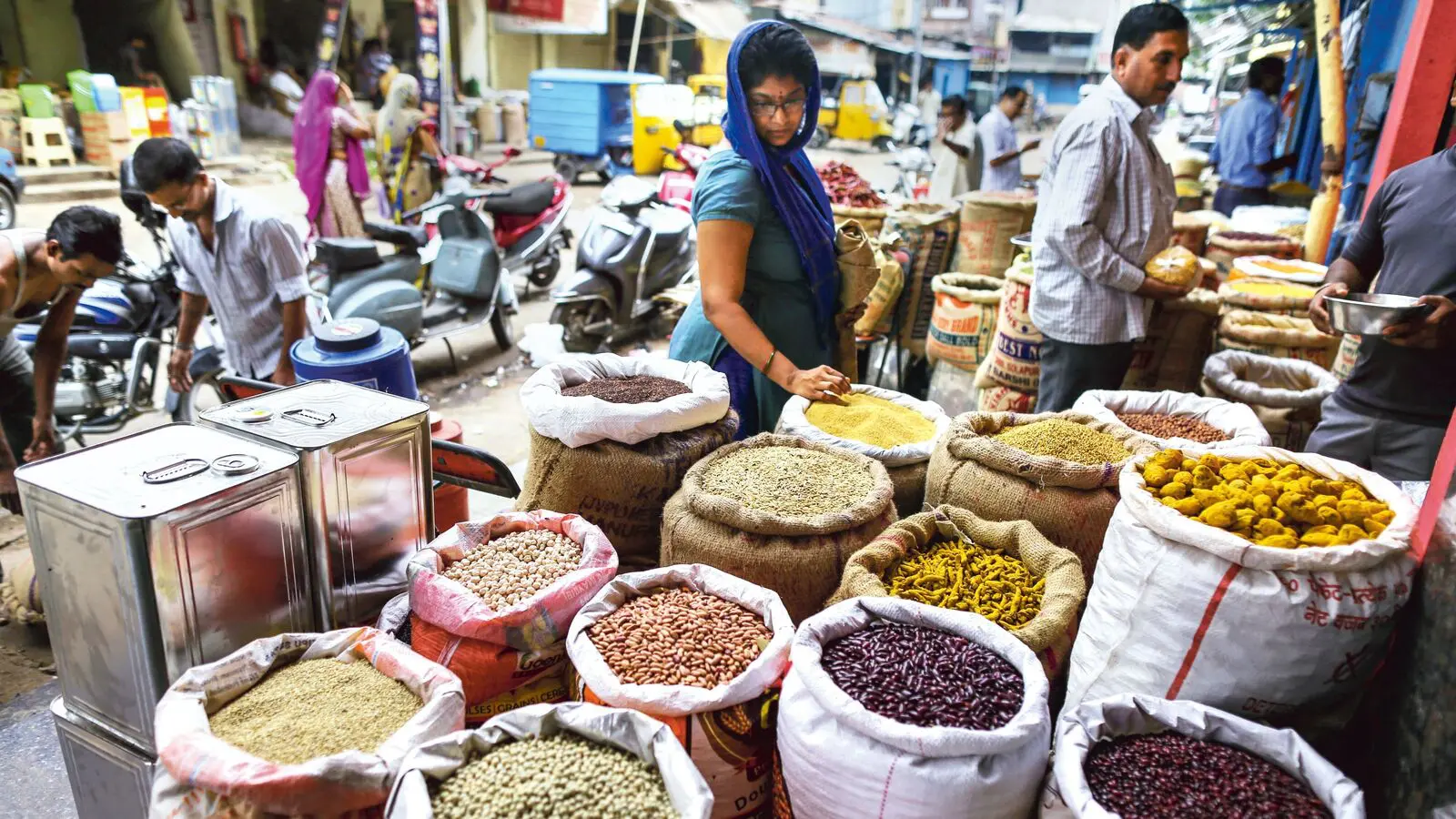New Delhi: India’s retail inflation saw a rise in August after dropping to an eight-year low in July, yet it remains within the Reserve Bank of India’s (RBI) target band. The Consumer Price Index (CPI) rose to 2.07% year-on-year, up from 1.61% in July. While food prices continued to drag on inflation figures, experts sense a cautious outlook for potential interest rate cuts should the economy show signs of slowing.
Retail Inflation Trends: A Closer Look
According to provisional data from the Ministry of Statistics and Programme Implementation, India’s retail inflation recorded a year-on-year increase of 2.07% in August, marking a notable rise from July’s revised figure of 1.61%. Economists had anticipated a slight uptick to 2.2%. Despite this increase, inflation remains comfortably within the RBI’s target range of 2-4%, providing a cushion for policymakers to consider interest rate cuts if economic growth begins to falter.
This rise in inflation, while concerning, is actually reflective of the recovery seen in several sectors. For instance, consumer prices have been stabilized by negative food inflation, which was reported at –0.69% in August. This suggests that cheaper food items are providing a deflationary pull on overall consumer prices. Notably, inflation for cereals, milk, and dairy products has also seen a moderation, revealing mixed trends across various food categories.
The Food Price Factor: Detailed Breakdown
Food prices played a significant role in influencing the August inflation figures. Among various food categories, cereal prices saw a slight easing to 2.7%, while milk and dairy products moderated to 2.63%. Fruit inflation, however, saw a decline to 11.65%—down from 14.42% in July. The most substantial shifts, however, were observed in protein-rich foods; meat and fish prices rose by 1.48%, and eggs saw an inflation increase to 3.12%.
Interestingly, oils and fats, vital in many Indian households, surged by 21.24% in August compared to 19.24% in July, demonstrating significant cost pressures. These shifts underscore how essential it is for families to plan their budgets carefully as they cope with varying price trends for vital goods.
| Category | August Inflation (%) | July Inflation (%) |
|---|---|---|
| Cereals | 2.7 | 3.03 |
| Milk and Dairy | 2.63 | 2.74 |
| Fruit | 11.65 | 14.42 |
| Vegetables | -15.92 | -20.69 |
| Oils and Fats | 21.24 | 19.24 |
GST Rate Cuts: Boost or Burden?
India’s recent GST rate rationalization has stirred discussions on its potential impacts on inflation. The GST Council’s recent meeting on September 3 concluded with a significant overhaul of the indirect tax system, consolidating rates into two slabs of 5% and 18%, with rates for essential items moved to lower brackets. Craig Fleet, a business consultant, highlighted how these changes are expected to reverberate positively across the fast-moving consumer goods (FMCG) sector.
“The GST benefits on FMCG products as well as household goods will be more apparent in September and prominently from October onwards,” remarked economist Madan Sabnavis. While the fear of inflation looms large in some sectors, many are hopeful that the restructured tax framework could help rejuvenate demand, especially during the upcoming festive seasons.
The Outlook for Future Interest Rates
The RBI’s Monetary Policy Committee (MPC) has retained its repo rate at 5.5% as of August, with no major shifts in policy expected soon. The RBI’s GDP growth forecast remains at 6.5%, while its inflation projection for the year was revised down to 3.1%. This cautious yet optimistic outlook is underscored by the current global economic environment, which has shown signs of disinflation.
Madhavi Arora, chief economist at Emkay Global Financial Services, pointed towards potential downside risks to growth due to external factors. “We think global resets could open up space for rate cuts later in the year,” she explained, emphasizing the interconnectedness of global economic trends and local monetary policies.
Ultimately, while there are signs of stabilizing inflation, the RBI’s keen interest in controlling the economic landscape remains pivotal. Effective measures will be crucial for sustaining growth in sectors heavily impacted by inflationary pressures.
In conclusion, as India navigates the complexities of inflation, food prices, and monetary policy, there’s an underlying current of cautious optimism. While the retail inflation rise in August may raise eyebrows, its positioning within the RBI’s target range provides a moment of calm amidst economic unpredictability.
Bankerpedia’s Insight 💡
India’s August retail inflation reflects a modest recovery while remaining within the Reserve Bank of India’s target. This cautious uptick is significant as it suggests potential leeway for interest rate cuts, crucial for stimulating economic growth in a challenging global landscape. A stable inflation outlook, alongside recent GST reforms, could bolster consumer spending and enhance liquidity in the banking sector. For readers, this emphasizes the importance of staying informed about inflation trends, as they directly affect savings rates and loan costs, ultimately influencing financial decisions and planning.
What Does This Mean for Me? 🤔
- Salaried Person → Increased inflation may affect take-home salary purchasing power.
- Business Owner → Potential for lower interest rates and stable inflation.
- Student → Student expenses may increase due to rising inflation.
- Self-employed → Inflation increase may raise costs for self-employed individuals.
- Homemaker → Higher food prices could strain household budgets.
- Retiree / Senior Citizen → Rising inflation may erode retirees’ purchasing power.
- Job Seeker → Inflation rise may affect job seekers’ purchasing power negatively.
- Farmer / Rural Citizen → Rising food prices may affect incomes and expenses.
Research References 📚
- www.livemint.com
- RBI
- SEBI
- Ministry of Finance
- NABARD
- Department of Financial Services (DFS)
- IMF
- World Bank
Loved our Research? ❤️
Bankerpedia turns financial confusion into clarity!
Subscribe to our YouTube channel for unbiased insights, financial literacy & practical banking wisdom.










